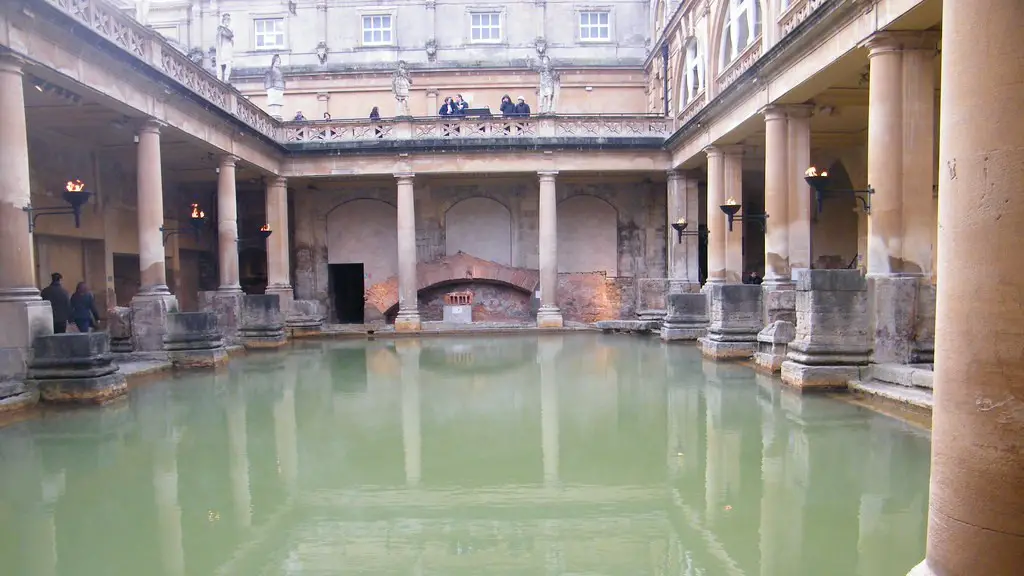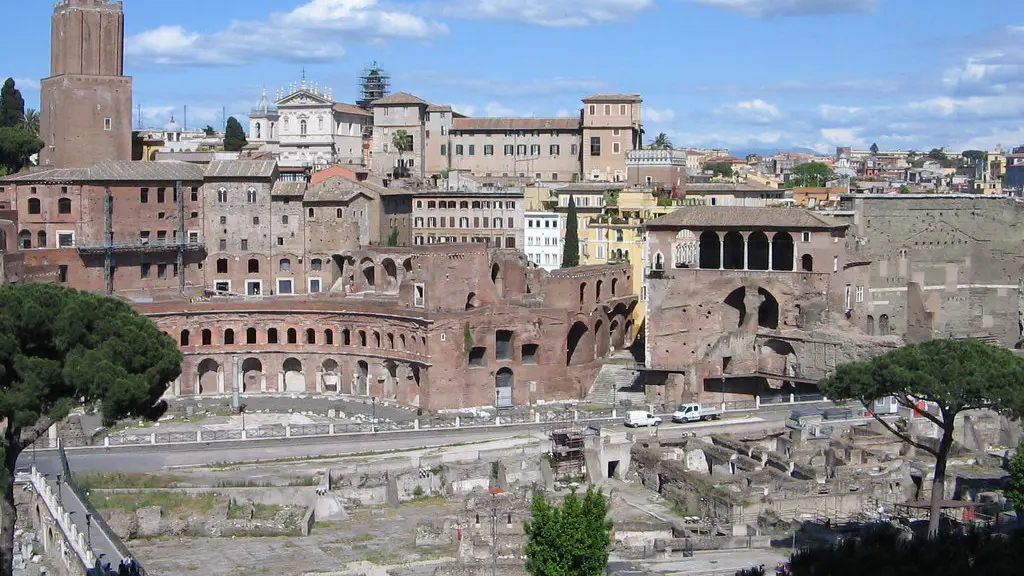The ancient Romans were known for their impressive public baths, which were a key part of their social life. Although private baths were also common, most people made use of the public baths, which were open to anyone. The frequency with which ancient Romans bathed varied depending on a number of factors, but it is thought that they typically bathed on a daily basis.
The ancient Romans actually bathed quite frequently. They would visit public baths, which were a mix of a gym, spa, and social club, multiple times a week.
Did Romans bath regularly?
Bathing played a major role in ancient Roman culture and society. It was one of the most common daily activities, and was practiced across a wide variety of social classes. Though many contemporary cultures see bathing as a very private activity conducted in the home, bathing in Rome was a communal activity. This was due in part to the fact that the city had a large number of public baths, which were used by people of all social classes.
The baths were a daily ritual for all citizens of Rome, regardless of age, wealth, or social status. This ritual was so important to Roman life that it was considered a symbol of the city itself. To Romans, the baths proved that they were cleaner – and therefore better – than the people of other countries. The baths were a place where people could relax, socialize, and escape the heat of the day.
How often did ancient Greeks bath
The ancient Greeks believed that it was important to bathe at key moments in life in order to purify the soul. This belief was reflected in their customs surrounding birth, marriage, and death. For example, the Dardanians, an Illyrian people, were said to only bathe three times in their lives: at birth, marriage, and after death. This was likely seen as a way to cleanse the soul and prepare it for the next stage in life.
Yes, soldiers, like ALL Romans tried to bathe daily when permitted. This was not always possible, however, due to the demands of battle or campaigning. When on the march, soldiers often had to make do with a quick wash in a stream or river.
Did the Romans brush their teeth?
The ancient Romans were known for their dental hygiene practices. They used frayed sticks and abrasive powders to brush their teeth. These powders were made from ground-up hooves, pumice, eggshells, seashells, and ashes. This allowed them to keep their teeth clean and healthy.
Bathing was a custom introduced to Italy from Greece towards the end of the 3rd century BC. Early Romans washed their arms and legs everyday, which were dirty from working, but only washed their whole bodies every nine days. This custom was eventually adopted by the Romans and became a part of their daily routine.
How good was Roman hygiene?
Hygiene in ancient Rome was very important and included the famous public Roman baths, toilets, exfoliating cleansers, public facilities, and—despite the use of a communal toilet sponge (ancient Roman Charmin®)—generally high standards of cleanliness.
The Ancient Romans were definitely ahead of their time when it came to plumbing! They developed a complex system of aqueducts and sewers that not only improved public health, but also made life much more comfortable. Thanks to the Romans, we now enjoy flush toilets, hot baths and running water in our homes.
Why can’t we swim in the Roman Baths
The Baths were a popular spot for swimmers and bathing was a key part of the local Bath Festival. However, after the death of a swimmer in the Baths, it was discovered that the water was polluted with a dangerous amoeba. This resulted in a ban on public bathing in the Baths on health grounds.
cleanliness was very important to the Egyptians and they often bathed multiple times a day to stay clean. It was believed that the closer someone was to being clean, the closer they were to the gods.
When did humans start showering daily?
It’s interesting to think about how our daily habits have changed over time, and how they’re likely to continue to change in the future. It’s clear that Americans used to bathe less frequently than we do now, but it’s not clear why that changed. It’s possible that it was simply due to a greater awareness of germs and a desire to be clean. Or it could be that as more Americans moved into cities, they felt the need to wash more often to get rid of the dirt and grime. Whatever the reason, it’s clear that our daily bathing habits are not set in stone, and they’re likely to continue to evolve in the coming years.
The oldest accountable daily ritual of bathing can be traced to the ancient Indians. They used elaborate practices for personal hygiene with three daily baths and washing. These are recorded in the works called grihya sutras which date back to 500 BCE and are in practice today in some communities.
Did Roman toilets flush
Roman toilets were not designed to flush in the way that modern toilets do. Instead, some of them were tied into internal plumbing and sewer systems, which often consisted of just a small stream of water running continuously beneath the toilet seats. This ensured that waste would be carried away from the toilets, but it did not provide the powerful flushing action that we are used to today.
A hot spring is a place where hot water bubbles up from the ground. The water is heated by geothermal energy, which comes from the Earth’s hot interior. Hot springs are found in many places around the world. People often visit hot springs to relax in the warm water.
What did Romans use for toilet paper?
If you went to the toilet in ancient Rome, you would not use toilet paper. Instead, you may have used a sponge (Latin: tersorium) to wipe. These ancient devices consisted of a stick with a vinegar- or salt water-soaked sponge attached. They were often shared!
The average life expectancy for a man in Ancient Rome was about 40 years old. The average height for a Roman during this time was around 5’5″, which is shorter than the average height of a Roman today. Although the average life expectancy and height has increased over time, it is interesting to note that the average height of a Roman during this time period was shorter than it is today.
What was the life expectancy for someone in ancient Rome
The rise and evolution of human diseases can be traced back to the Roman conquest. After the Roman conquest, the populations had a shorter lifespan, with a life expectancy at birth of about 27 years. Infant mortality was greatly increased, reaching 25% in the population of Sulmona (about 4–2 centuries BC).
The tersorium was a common cleaning tool used by the ancient Romans. It was a stick with a sea sponge attached to the end, which was used to clean the behind. The gutter supplied clean flowing water to dip the sponges in, and the tersorium was a soft, gentle way to clean.
Warp Up
The ancient Romans were said to have been very clean people and they bathed quite often. There were public baths available, but many people also had baths in their homes. It is said that they bathed at least once a day, and sometimes more.
The ancient Romans were known for their love of cleanliness and bathing. They believed that washing their bodies was a way to purify their souls. The Romans built public baths all over their empire so that everyone could enjoy the benefits of bathing. The frequency of bathing varied from person to person, but the average Roman bathed about once a week.





